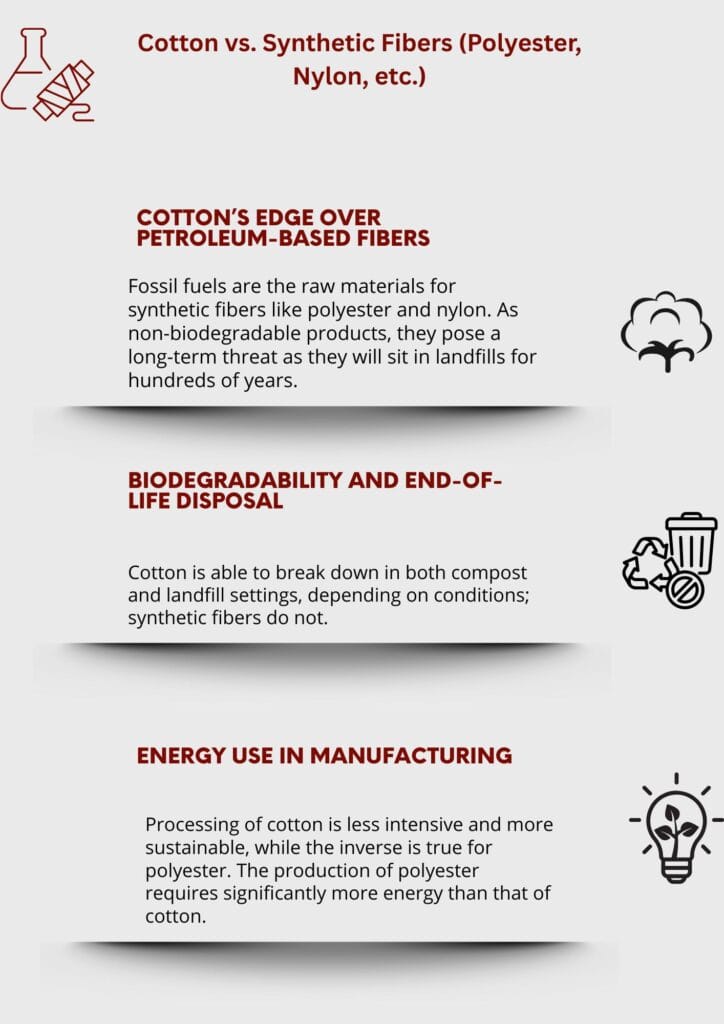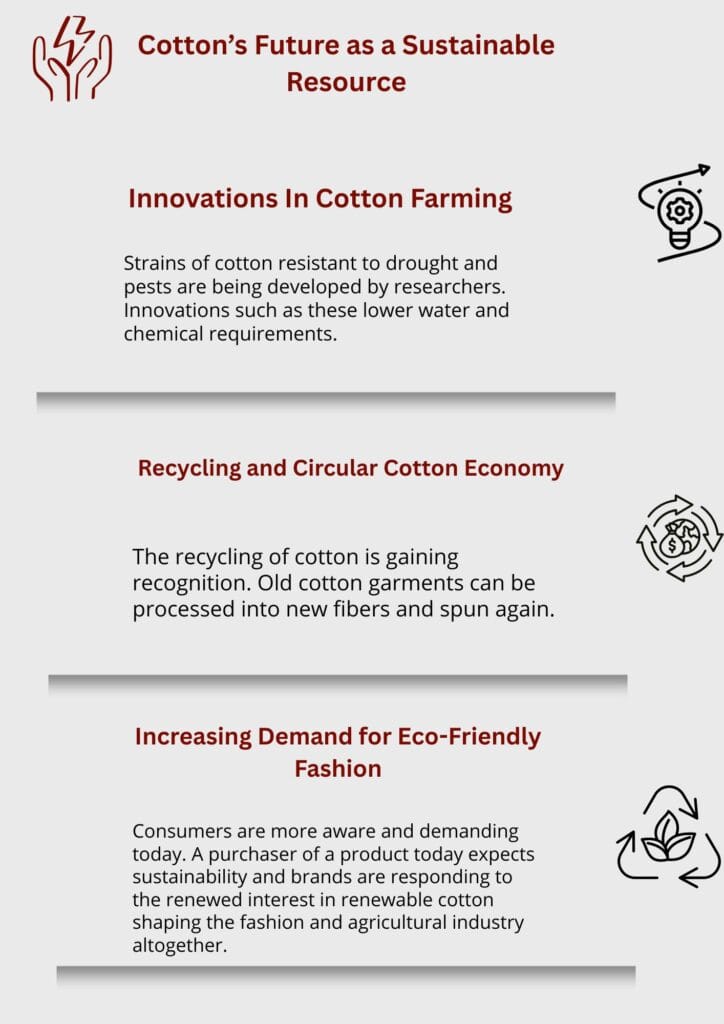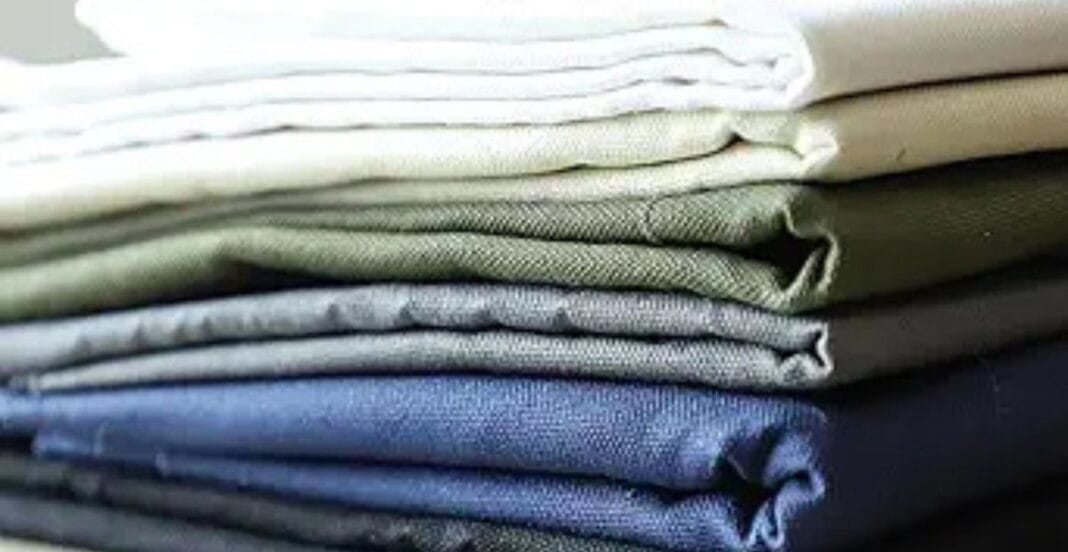Introduction
Included among the primary natural fibers utilized globally, cotton is derived from the cotton plant. Cotton is spun into yarn and woven into fabric for apparel, household textiles, and even medical products. Subsequently, cotton excels in both softness and breathability, which makes it popular in many industries that require textiles. However, this popularity raises a key environmental concern: is cotton a renewable resource
People across the globe are shifting towards an environmentally-conscious lifestyle, examining the sustainability of the products they use on a daily basis. One losing consideration is cotton’s role in the eco-responsible fashion discourse. Can cotton be regarded as a sustainable “hero”, or does it poses environmental challenge that undermines its renewability?
Explain What Are Renewable Resources and Non-Renewable Resources
To evaluate if cotton biodegrades and renews as a free resource, we will answer the first part of the query by discussing what renewable and non-renewable resources entail. Resources that are self-sustaining and can replenish over time without human intercession fall under the category of renewables. These are sunlight, wind, and biological resources like trees and crops.
Non-renewable resources are fossil fuels, coal, oil, and natural gas because they have a limited supply and take centuries to replenish. A non-renewable resource does not manage to renew, sustain, or bounce back from uninterrupted use without severe damage.
Cotton does not fit the mold because it does require water usage, chemical inputs, and it should regrow seasonally without ecosystem-long term damage.
Renewability of Cotton? The Science
Its Growth Cycle and Replanting Ability
Cotton is a crop-based plant which gets most of its nutrients energizes from the soil. Cotton is harvestable and fiber yielding in a span of five to six months. Picking the crop enables the land to be replanted to cotton as well as with other crops. The rapid regrowth coupled with the ability to switch crops makes cotton renewable potential stand out.
Comparison with Other Natural Fibers
Cumulatively, cotton is still slower growing than other fibers such as bamboo, hemp, and even wool. Hemp grows faster and better, requiring fewer inputs and natural resources, wool relies on livestock breeding, which is resource intensive, while cotton strikes a balance between speed and versatility mantra which aids hemisphere cultivation, advocating resource renewability.
Biodegradability and Natural Origin
Cotton is biodegradable. Unlike synthetic fibers that take centuries to decompose, cotton can break down in a few months when left to natural processes. This trait enhances cotton’s renewability. Thus, if grown and harvested sustainably, the answer to whether cotton is a renewable resource leans toward yes.
Challenges to Cotton’s Renewability
Water Consumption in Cotton Farming
Arguably, the most significant problem regarding cotton farming’s holistic sustainability is its high water requirements. To cultivate one kilogram of cotton, it is estimated that approximately 10,000 liters of water are needed. This acute demand for water in arid regions damages the ecosystem, and challenges the claim that cotton farming is environmentally friendly.
Pesticide and Fertilizer Use
The use of pesticides and fertilizers marked conventional cotton farming practices. The environmental impacts of such practices are alarming as they diminish soil quality, contaminate water, and negatively affect ecosystems. While cotton crops can be renewed, the farming practices are not sustainable.
Land Use and Deforestation
The expansion of large-scale cotton farming accelerates deforestation and the destruction of natural habitats. This causes a disturbance to the local ecosystem and increases greenhouse gas emissions by reducing biomass. If cotton is to be a renewable resource, sustainable land use practices must be adopted.
Concerns Regarding Sustainability and GMO Cotton
Genetically modified organisms (GMO) cotton reduces the amount of pesticide in use; however, it is highly criticized. Some people claim that it causes monocultures and further reliance on particular seed vendors. Even though GMO cotton appears to foster greater productivity, its long-term renewability effects remain questionable.
Cotton Farming Sustainability
Organic Cotton Farming vs Typical Farming
Organic farming preserves ecosystems by using no chemicals, protecting soil, and controlling pests naturally. It also safeguards farmers’ health from toxic chemicals. The organic cotton farm indicates that cotton can indeed be renewable, supporting the fully sustainable theory.
Rain Fed Cotton Production and Water Efficiency
In certain areas, cotton is cultivated using only rainwater instead of irrigation. This technique spans a large cotton-growing area while promoting the sustainability of limited freshwater resources. Water management is crucial to cotton renewability.
Socially Responsible Production and Fair Trade Cotton
With Fair Trade certification, farmers are guaranteed fair pay, a safe working environment, and the adoption of ethical sustainability standards. Business and cotton production ethics are concerned with fairness, taking account of environmental impacts, and responsible stewardship of natural resources.
Cotton Field Regenerative Practices
Regenerative agriculture looks beyond sustainability by focusing on improving soil health, biodiversity, and carbon capture. If more cotton farms take up such practices, the renewable potential of the fiber will significantly improve.
Cotton Production Environmental Sustainability
Cotton’s Contribution to Climate Change
The farming and processing of cotton, accompanied by the farming machinery and transportation, extends the use of greenhouse gases. Maintenance of a renewable resource like cotton comes from improved practices in carbon emissions.Pollution stemming from dyeing and finishing processes
Following harvesting, cotton crops are often dyed and chemically treated, releasing pollutants into water systems. Cleaner processing techniques must be implemented to meet sustainability goals.
Microplastics from blended cotton fabrics
The blending of cotton with synthetic materials results in microplastic shedding during washes. These micro- particulates make their way into the oceans and subsequently the food chain. Sticking to 100% natural cotton can help reduce this less visible form of pollution.
Cotton vs. Synthetic Fibers (Polyester, Nylon, etc.)

Cotton’s edge over petroleum-based fibers
Fossil fuels are the raw materials for synthetic fibers like polyester and nylon. As non-biodegradable products, they pose a long-term threat as they will sit in landfills for hundreds of years. Conversely, cotton is plant-based and decomposes in nature, making it a far greener option.
Biodegradability and end-of-life disposal
Cotton is able to break down in both compost and landfill settings, depending on conditions; synthetic fibers do not. This sharp distinction illustrates why cotton is considered more eco-friendly and bolsters the argument it is a renewable resource.
Energy use in manufacturing
Processing of cotton is less intensive and more sustainable, while the inverse is true for polyester. The production of polyester requires significantly more energy than that of cotton. Supplementing these negative aspects of synthetic fibers further increases their environmental burden.
Cotton’s Future as a Sustainable Resource

Innovations In Cotton Farming
Strains of cotton resistant to drought and pests are being developed by researchers. Innovations such as these lower water and chemical requirements. Such advancements can redefine the resource question of cotton to a definite yes.
Recycling and Circular Cotton Economy
The recycling of cotton is gaining recognition. Old cotton garments can be processed into new fibers and spun again. This model has a circular nature enabling reduction of waste and optimization of resource use. It enhances renewability claims of cotton.
Increasing Demand for Eco-Friendly Fashion
Consumers are more aware and demanding today. A purchaser of a product today expects sustainability and brands are responding to the renewed interest in renewable cotton shaping the fashion and agricultural industry altogether.
How Consumers Can Support Sustainable Cotton
Buy Organic and Fair Trade Cotton Products
Selecting an organic cotton labeled product and Fair Trade certified apparel supports ethical and sustainable agriculture. These certified products are easier to find since they are clearly marked.
Support Sustainable Brands
A number of clothing brands now have sustainable cotton policies. Supporting these companies helps shift the industry toward greener practices. Your purchase decisions do make a difference.
Recycle and Upcycle Cotton Clothing
Think twice before tossing old clothes into the garbage. Recycle and upcycle outdated garments. Old cotton clothing can be turned into new clothing, insulators, or even rags. Recycling enhances its life cycle and helps reduce waste.
Conclusion
Cotton is a renewable resource because it grows on a seasonal basis and both dies and can be replanted without human intervention. Still, renewability is limited by the excessive water and chemicals needed for its cultivation alongside intensive agriculture. The good news is that sustainable alternatives—like organic cotton, regenerative farming, and cotton recycling—are available.
So, is cotton a renewable resource? Indeed, it is as long as the growing and usage methods employed are responsible. Sustainable consumption habits can help resolve this problem. Leading with greener measures and using sustainable cotton products guarantees that cotton can act as a renewable resource in the quest for an eco-friendlier ally.
FAQs
Renewable it is, as it is also a plant-based crop which can be grown every season and biodegrades over time. However, this depends highly on the manner in which cotton farming is done. Strategies such as organic farming, water-efficient irrigation, and crop rotation help a great deal towards cotton’s sustainable farming.
Renewable resources, unlike cotton, fibers made of nylon and polyester are non-renewable as they stem from fossil fuels. Cotton is plant based, can be replanted for growth each year, does not need petroleum, and decays in soil easily which makes it much more sustainable.
This discussion is valid since traditional ways of growing cotton crops are likely to be resource greedy. A lack of sufficient water, heavy use of pesticides, and depletion of soil nutrients are common issues. While cotton can be considered a renewable resource in essence, its cultivation will determine the impact on the environment.


